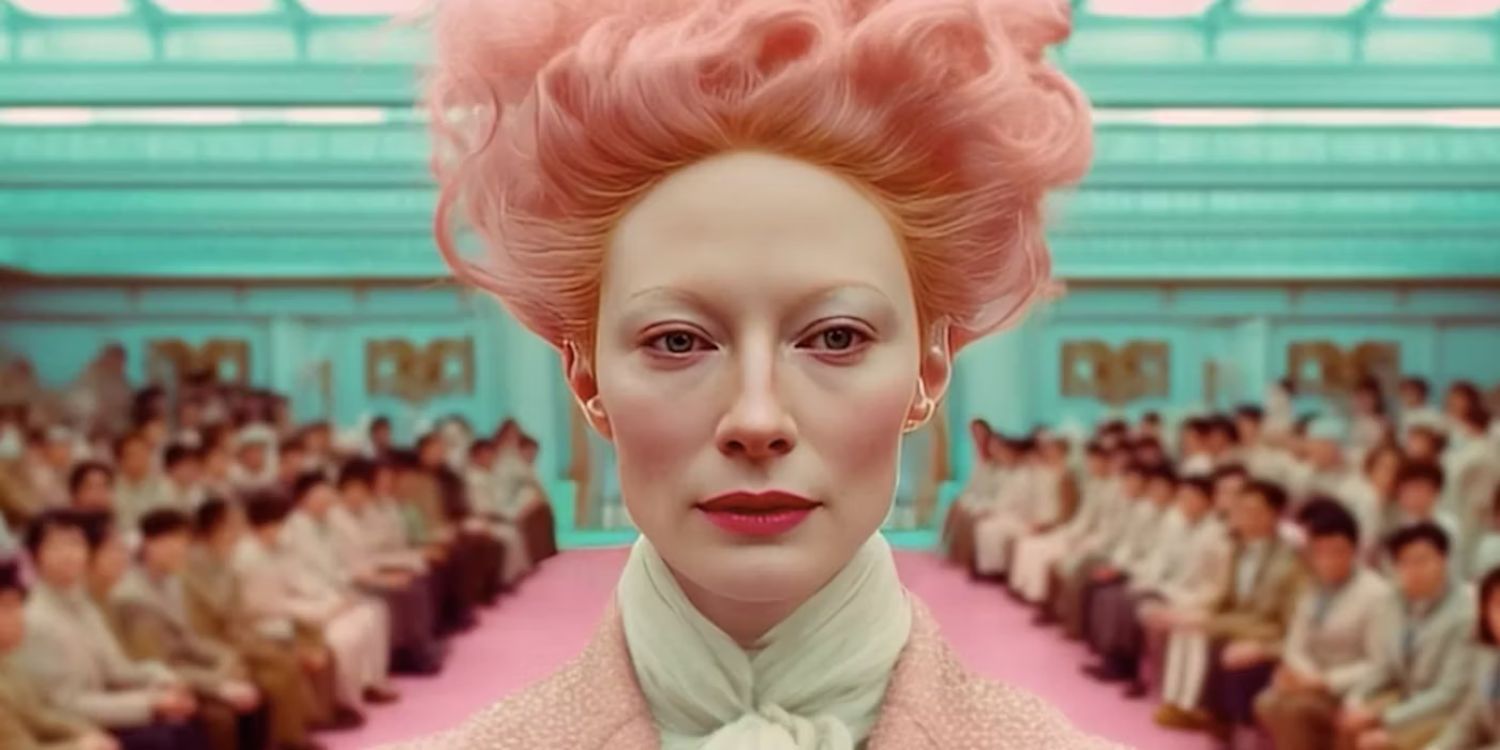Is Wes Anderson's New Movie Emptier Than AI-Generated Content?

Table of Contents
The Stylistic Choices of Wes Anderson and the Question of Depth
Wes Anderson's signature aesthetic is instantly recognizable: symmetrical compositions, pastel color palettes, meticulously crafted sets, and a distinct visual style that’s become both his trademark and a frequent subject of critical analysis. This stylistic approach is central to the discussion of whether his new movie feels "empty."
Analyzing Anderson's Signature Aesthetic
- Symmetrical Framing: Asteroid City is rife with perfectly balanced shots, a hallmark of Anderson's work.
- Pastel Color Palettes: The film's visual landscape is dominated by muted, almost artificial colors, creating a specific mood.
- Whimsical Set Design: The meticulously designed sets contribute to the film's unique visual language, but some argue this meticulousness overshadows emotional depth.
Does this style enhance or detract from the narrative's emotional impact? Critics often debate this, comparing Anderson's approach to the superficial appeal often associated with AI-generated art. The highly stylized nature of both can feel emotionally distant, even if visually striking. The question becomes: is this intentional artistic choice or a lack of genuine emotional engagement?
Narrative Structure and Pacing
- Fragmented Narrative: Asteroid City's narrative unfolds in a somewhat fragmented and episodic manner.
- Character Development: While the characters are visually distinct, some argue their emotional arcs feel underdeveloped.
- Pacing: The film's deliberate pacing, while characteristic of Anderson, might contribute to a sense of detachment for some viewers.
This deliberate pacing and fragmented structure can be contrasted with the often formulaic and predictable nature of AI-generated narratives. AI struggles to generate genuinely complex and emotionally resonant storylines, often resulting in shallow plots and unconvincing characters. However, is Anderson’s deliberate choice to prioritize style over traditional narrative arc comparable to, or distinct from, the limitations of AI?
The Limitations and Potential of AI-Generated Content
The rapid advancement of artificial intelligence has led to significant strides in generating visual art and narratives. However, current AI technology possesses limitations that directly relate to the "emptiness" debate.
The Current State of AI Art and Storytelling
- Superficial Detail: AI-generated art often excels at mimicking style but lacks the underlying emotional depth or conceptual richness of human-created art.
- Lack of Originality: AI largely relies on existing datasets, leading to derivative or unoriginal works.
- Ethical Concerns: Questions of copyright infringement and the devaluing of human artistic labor persist in the AI art sphere.
These limitations directly impact the quality and emotional impact of AI-generated narratives. AI struggles to create believable characters, compelling plots, and emotionally resonant stories, often resulting in a feeling of superficiality and a lack of genuine human connection.
Comparing the "Emptiness"
The "emptiness" in both Anderson's film and AI-generated content stems from different sources. In Anderson's case, it’s potentially a deliberate artistic choice, a stylistic prioritization. With AI, it's a consequence of technological limitations.
- Stylistic Choice vs. Technological Limitation: Anderson's style is a conscious artistic decision, while the "emptiness" in AI art is a result of its inability to replicate genuine human emotion and creativity.
- Intentional Minimalism vs. Lack of Depth: While some might find Anderson's minimalism emotionally vacant, it's crucial to differentiate this from the inherent lack of depth in AI-generated content.
Is the perceived emptiness a stylistic choice or a sign of artistic failure? In AI art, the emptiness reflects the current state of technology, not artistic intention.
The Role of Subjectivity in Evaluating Art
The perception of "emptiness" in art is inherently subjective. What one viewer perceives as emotionally resonant, another might find shallow or unfulfilling.
Criticisms and Interpretations
- Divergent Opinions: Critical responses to Wes Anderson's films and AI-generated art vary wildly, reflecting differing tastes and interpretations.
- Personal Experiences: An individual's background, experiences, and expectations greatly influence their artistic interpretation.
This subjective element complicates any attempt to definitively judge whether Anderson's new film is "emptier" than AI-generated content. What constitutes "emptiness" remains deeply personal.
The Value of Style and Form
Even art that prioritizes style over overt emotional expression can hold significant artistic merit. Minimalism, for example, is a valid artistic approach that often explores themes of simplicity and restraint.
- Minimalist Art Movements: Movements like Minimalism and Conceptual Art exemplify the power of style and form as primary artistic elements.
- Anderson's Artistic Vision: Anderson's meticulously crafted visual style, despite its perceived "emptiness" by some, contributes to a unique and recognizable artistic vision.
The perceived "emptiness" in Anderson’s work could be interpreted as a deliberate artistic statement, not a deficiency.
Conclusion: Re-evaluating "Emptiness" in Wes Anderson and AI-Generated Content
This article has explored the complex comparison between the perceived emptiness in Wes Anderson’s Asteroid City and the inherent limitations of AI-generated content. While some find Anderson's stylistic choices emotionally vacant, the comparison reveals a nuanced discussion about artistic intention, technological potential, and the subjective experience of art. The "emptiness" in each case stems from fundamentally different sources: conscious artistic decision versus technological limitations. Ultimately, whether Wes Anderson's new movie is indeed "emptier" than AI-generated content is a matter of individual interpretation and subjective judgment.
So, what do you think? Is Wes Anderson's new movie emptier than AI-generated content? Share your thoughts in the comments below or on social media using #WesAnderson #AIart #FilmCriticism #AsteroidCity. Let’s continue this discussion!

Featured Posts
-
 American Music Awards 2025 Swift And Beyonces Nomination Announcement
May 28, 2025
American Music Awards 2025 Swift And Beyonces Nomination Announcement
May 28, 2025 -
 Chicago Med Season 10 An Underrated Duos Unexpected Return
May 28, 2025
Chicago Med Season 10 An Underrated Duos Unexpected Return
May 28, 2025 -
 Arsenal Set For Record Breaking Signing World Class Striker Targeted
May 28, 2025
Arsenal Set For Record Breaking Signing World Class Striker Targeted
May 28, 2025 -
 The Garnacho Autograph Controversy A Look At The Incident
May 28, 2025
The Garnacho Autograph Controversy A Look At The Incident
May 28, 2025 -
 Ipswich Town Latest Injury News Mc Kenna Cajuste And The Absentees
May 28, 2025
Ipswich Town Latest Injury News Mc Kenna Cajuste And The Absentees
May 28, 2025
